How the Moon Landing Changed Jewelry History
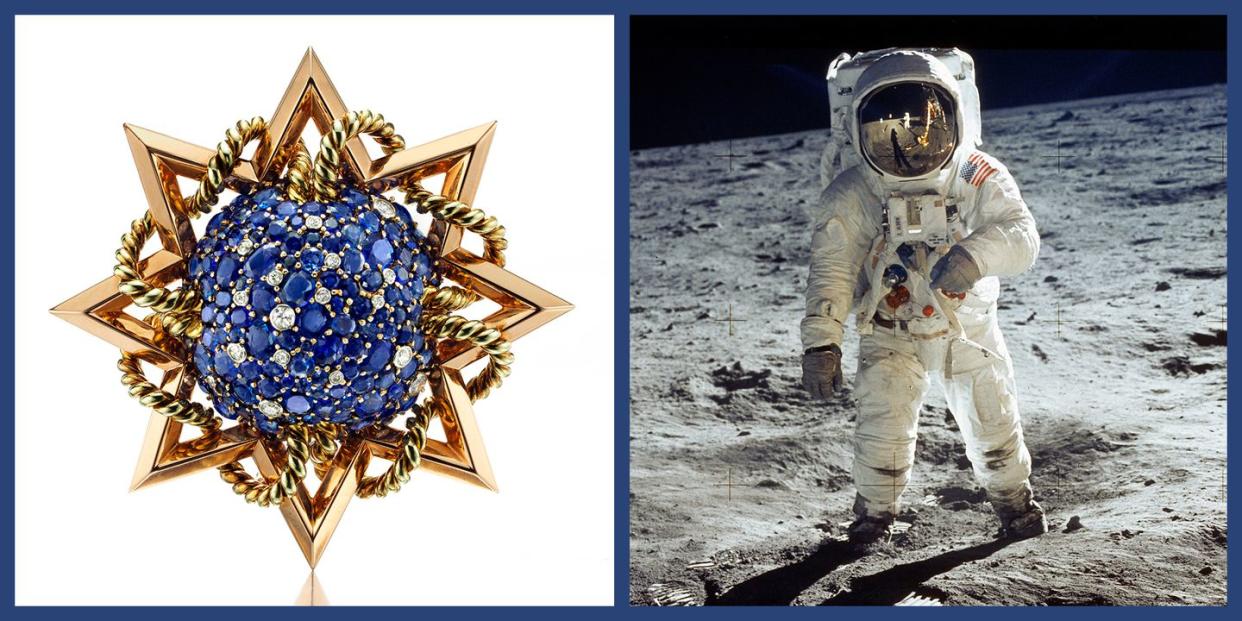
The next time we land on the moon, I’d like someone to leave a Van Cleef gold Crater cuff on its surface. It’s not unprecedented. The Apollo 11 astronauts—whose historic mission celebrates its 50th anniversary this week—left several things behind in addition to their footprints: a space module, medals of remembrance, a disc with messages of hope from leaders of 73 countries, several scoops and measuring devices, and 96 bags of human waste.
What place does the heavily hammered gold cuff—made famous in an image of Jackie Onassis greeting Muhammad Ali—have amidst all this? The Apollo mission, though yes one giant leap for mankind, also made enormous strides for jewelry.
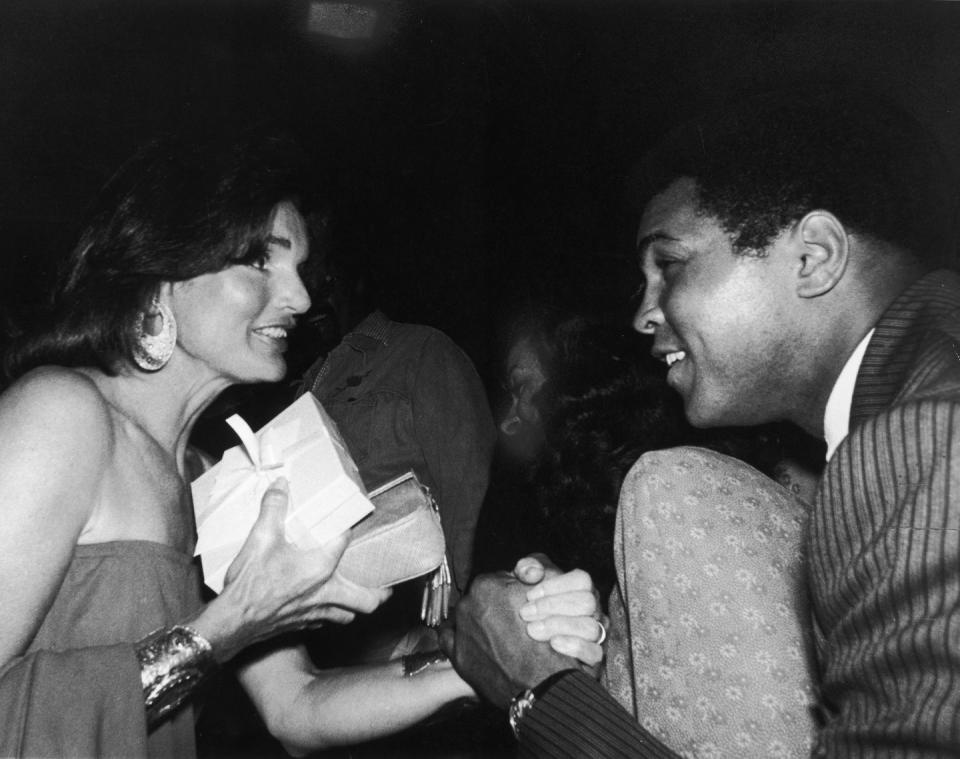
I often say you could illustrate a timeline of the history of the world in jewels. The surge in European travel in the 19th century and the rise of the Grand Tour would be marked by Etruscan Revival pieces noted for recreations of classical motifs and filigree techniques; the 1922 discovery of King Tut’s tomb represented by the Egyptian Revival lapis scarabs and ruby and diamond Pharaoh bracelets that followed it; sightings of Halley’s Comet illustrated by the trend for bejeweled stars.
The era of great space exploration proved equally fertile ground for jeweler's imaginations. The launching of Sputnik could be written in Cartier’s late 1950s gold spiked brooches of the same name. The successful mission of Apollo 11 would be writ in gold, with that Van Cleef Crater cuff, and maybe a pair of Ilias Lalaounis orbit-shaped Apollo earrings.
JEWELS FROM THE STARS
“Jewelry has long been influenced by the cosmos,” Lee Sigelson reminds us. “The sun, moon, and stars proliferated in brightly colored enamel and gold in Ancient Egyptian jewelry. In the Georgian period, glittering diamond stars were often set in the hair, as exemplified by Winterhalter’s 1865 portrait of Empress Elizabeth of Austria. And in the 1940s, Verdura created the oversized 'puffy' star for Paul Flato.” And the Victorians, in the wake of Halley's Comet's appearance in 1835, used starbursts and other space related motifs in their jewels, Russell Zelentz of Stephen Russell says.
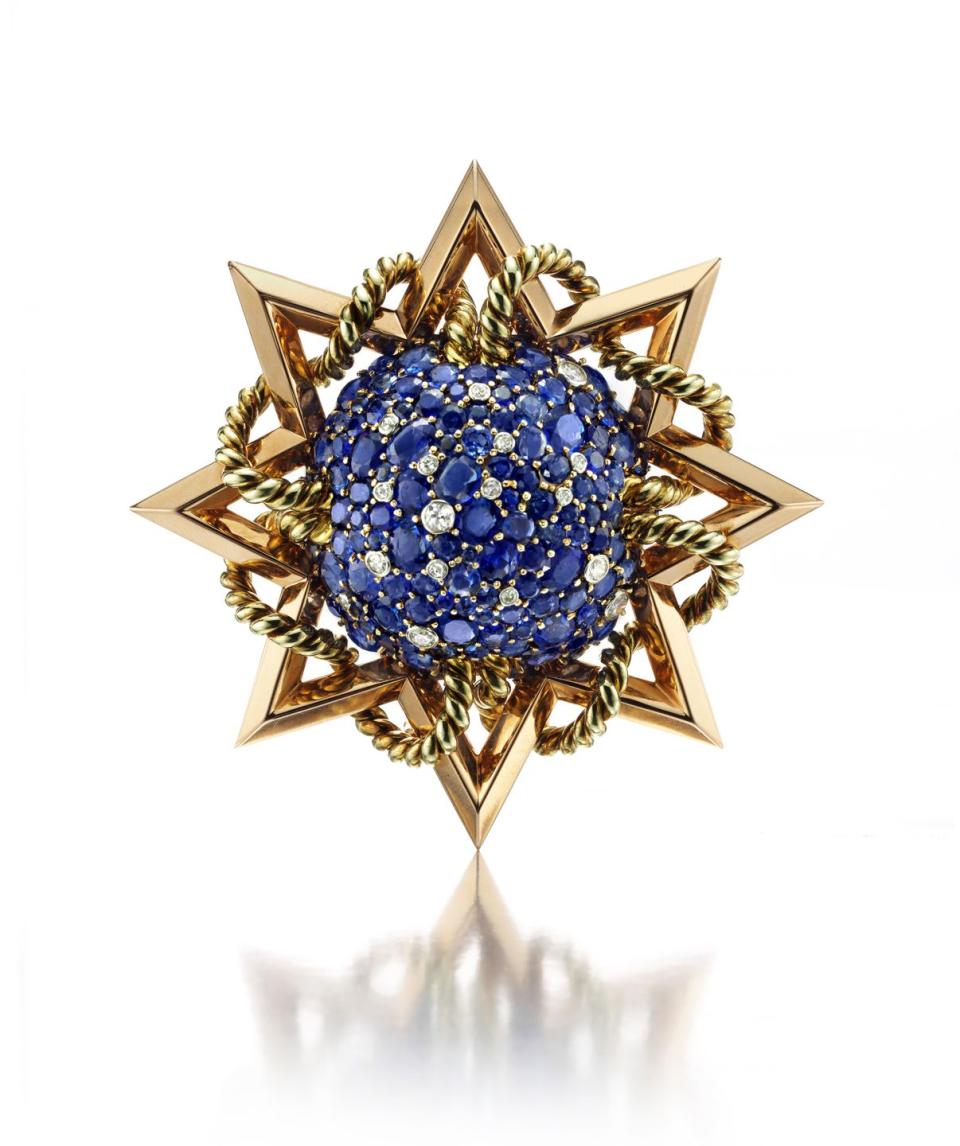
Jewelers seem equally enamored with the shapes and textural possibilities space allowed them to explore as they were with the mystery the skies have always held within them. Sigelson points to 1928, when Cartier combined the human need to explain and explore the cosmos with the jeweler’s task of marking important events with the creation of Le Ciel, an Art Deco mystery clock created in the Paris workshop to most likely mark the passing of the Pons-Winnecke comet on June 27, 1927.
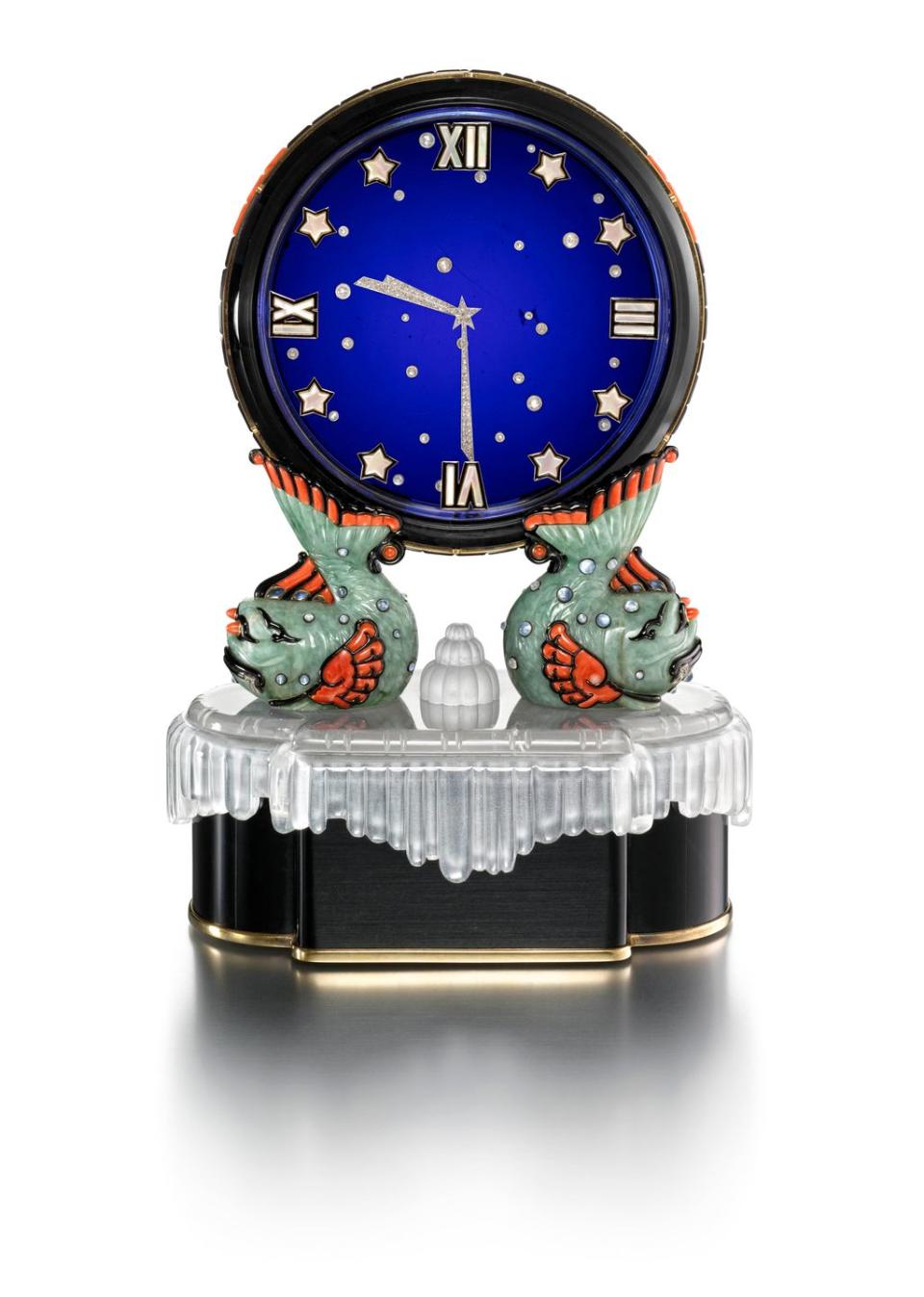
"Diamond-set hands designed to resemble shooting stars move across the face that depicts a night sky of scattered diamond stars,” says Siegelson, a third-generation jewelry dealer and the owner of the treasure. “The clock rests on the tails of two carved jade and coral carp and a rock crystal fountain flows atop the timepiece’s obsidian base.”
SPUTNIK & FRIENDS
Cartier continued to mark this territory as they returned to celestial topics with their “sputnik” brooches in the 1960s—arguably the most well known evidence of the Space Age’s influence on the jewelry world—and with the creation of the Lunar Module replicas to commemorate the 1969 moon landing. But they were not the only ones inspired by what was happening up above. “Pol Bury made an interesting variation on the sputnik design, adding a kinetic element and making the 'rays' slip in and out of earrings and rings,” says Siegelson.
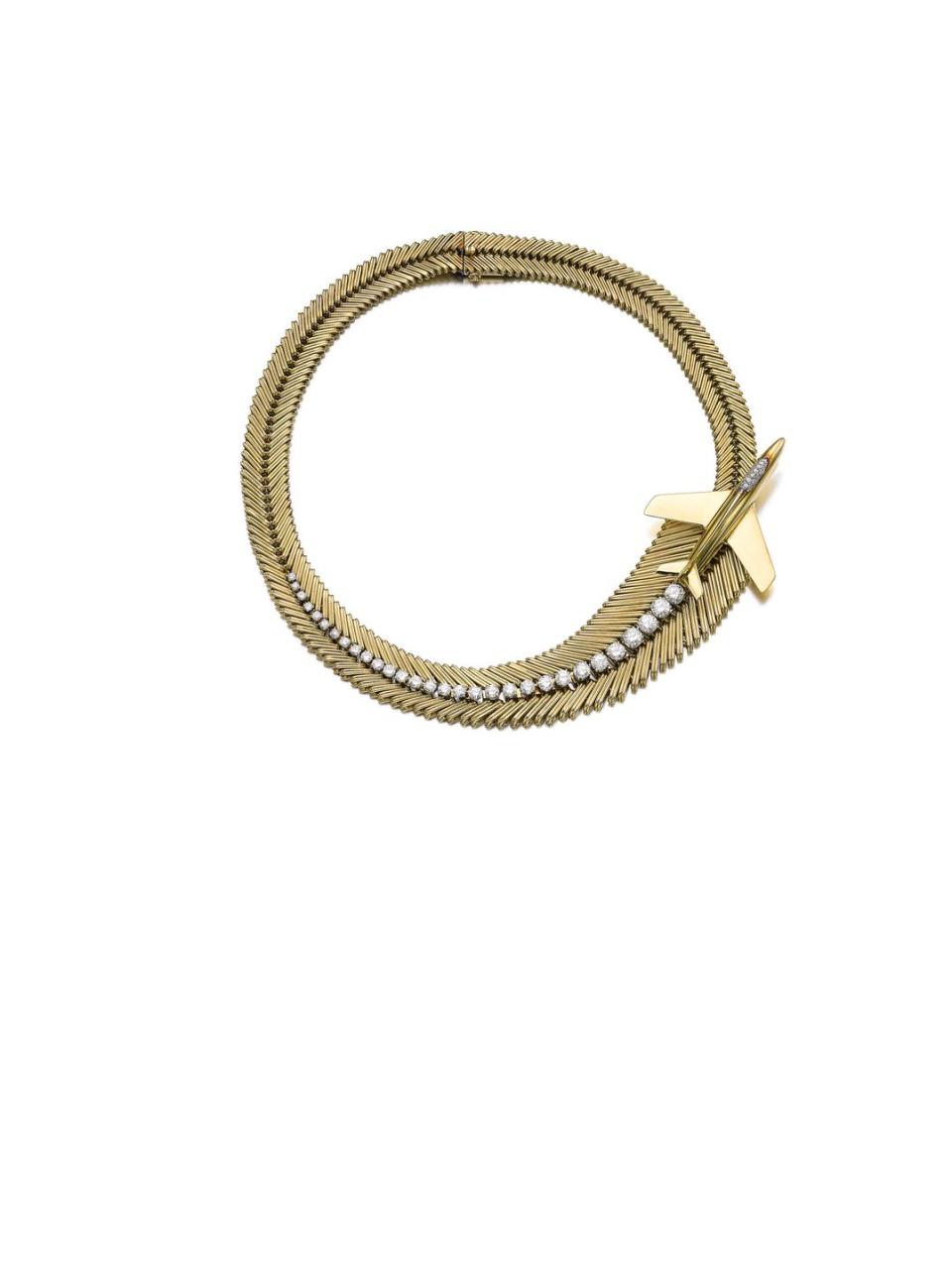
French jewelry house Sterle created a spiked and fluid Star Trek-like necklace in the early 1960s that is now part of the collection of Stephen Russell. In 1956 Van Cleef designed a gold necklace with a Mystere IV fighter jet attached to it and a line of graduating circular cut diamonds. Suzanne Belperron was creating starburst diamond earrings in 1960.
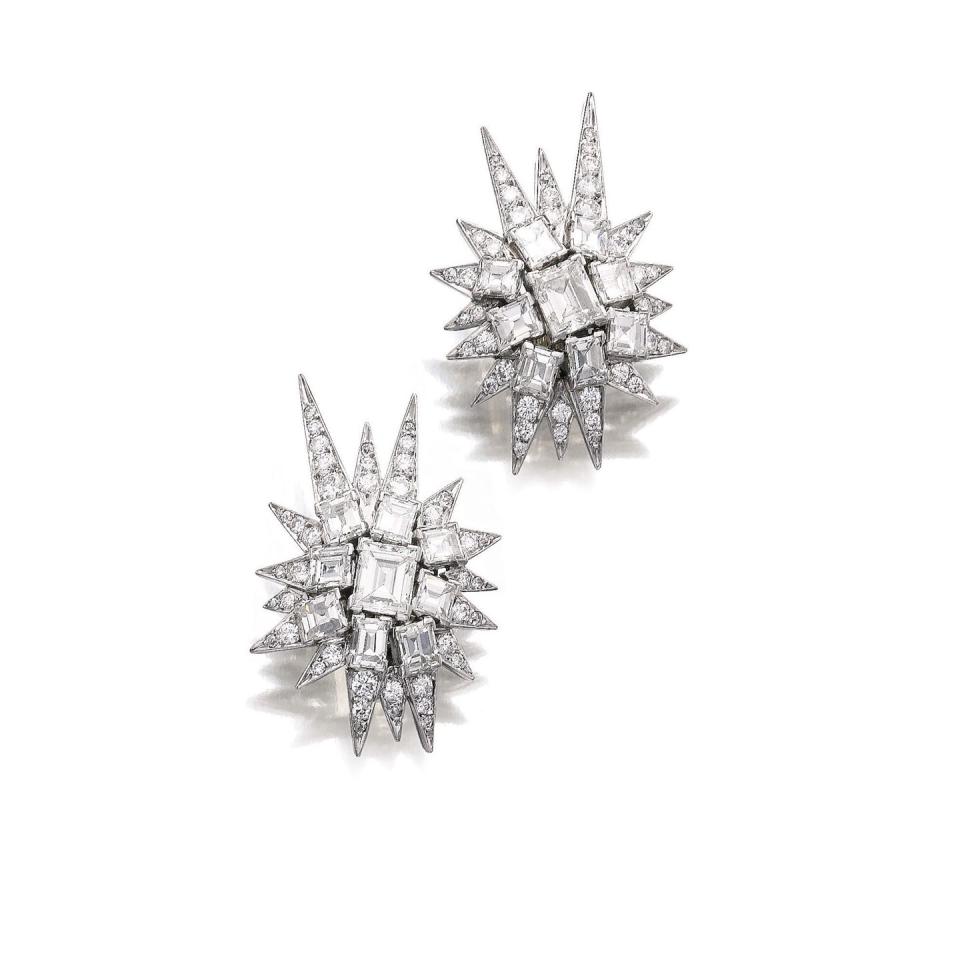
Literal adaptations of space shapes are a key indication of how the era inspired jewelers, but the moon landing and the images that followed also shifted how jewelers worked with materials. Textures became a bit rougher, less smooth. Stones were introduced in cuts that exposed their rawness.
“One of my favorite designs made after the moon landing, “ says Siegelson, “are Jackie O’s Crater cuffs by Van Cleef & Arpels. This unusual pair of cuffs was hammered and pitted in a brutalistic manner, creating a fascinating worked surface. And when you hear the name, it’s clear they replicate the surface of the moon.”
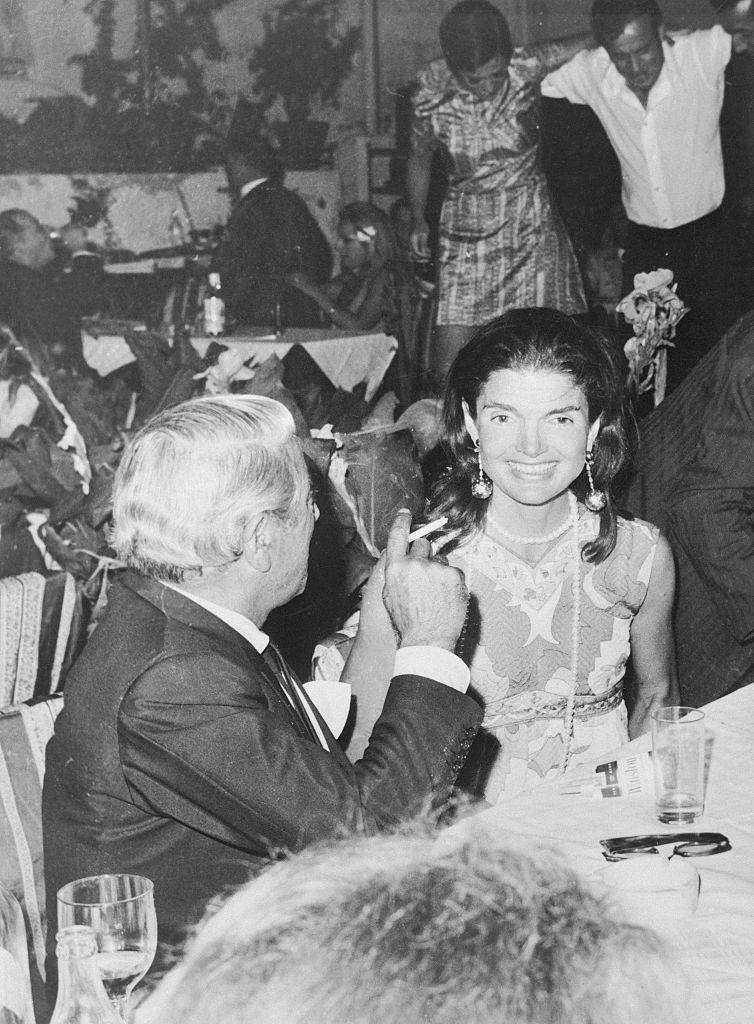
Ilias Lalaounis’s Apollo earrings, commissioned by Ari Onassis for his wife Jackie after the moon landing, consist of an orbit-like sphere of hand hammered gold, also clearly meant to look and feel lunar-like. Jewelry scholar and vintage dealer Mahnaz Ispahani also points to the 1970s era “Moonscape” necklace of Tapio Wirkkala, and David Watkins multi-pronged 1970s Space Age rings. It is during this era that we also begin to see the use of stones like quartz and onyx, not cut and polished but in their rough state, a trend that is largely attributed to the new glamour of space in all its many textures.
TO INFINITY AND BEYOND
The sun, moon, and stars emerged as one of the most popular motifs of late 1950s through early 1970s jewelry, clearly inspired by the Space Age and the celebration of the successful moon landing of July 20, 1969. But the allure of the heavens has not ceased.
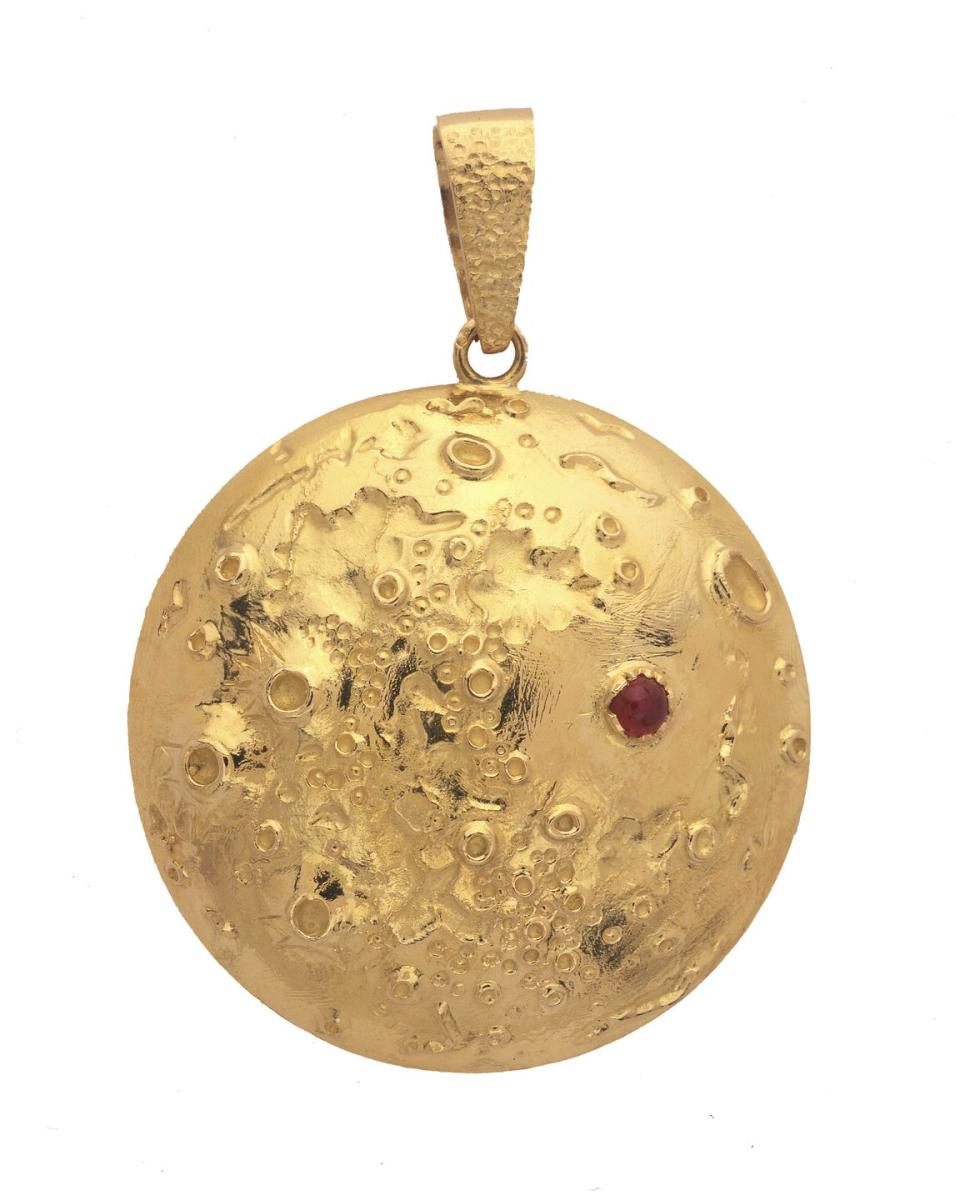
At the recent Las Vegas Jewelry Couture Show, the shapes and the textures the moon landing unleashed down on earth were still clearly visible. Some of the most talked about pieces included Vram’s comet shaped earrings in gold and pink sapphire, Monica Rich Kosann’s crescent moon charms in lapis, turquoise, and pearl and David Yurman’s jagged edge turquoise and ruby necklace.
And if you need the enduring temptation of "space by the numbers," consider that a pocket watch created by George Daniels to commemorate the moon landing sold at Sotheby's London this month for a record breaking $4.5 million. And the prices at Sotheby’s July 19 curated sale of Speedmasters, entitled "Omega Speedmaster: To the Moon and Back" (in honor of the watch worn by the Apollo astronauts) are expected to be equally eye-opening.
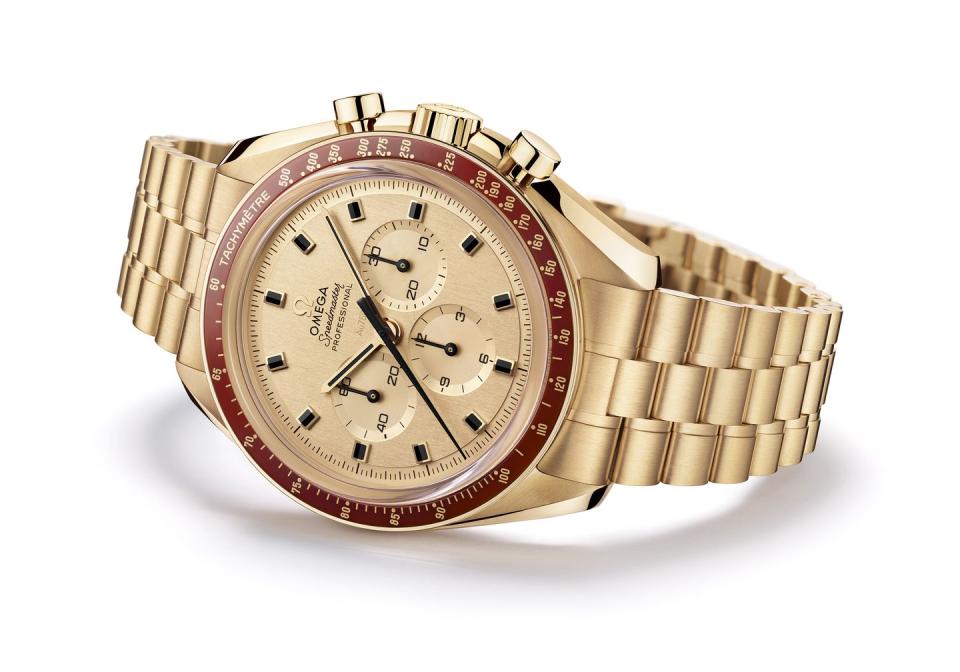
('You Might Also Like',)

